Settlements from the Past (Birnam, Kingscourt, Saunders' Corners, Wisbeach)
Gordon and Winnie Vance and children in front of last Birnam General Store. Courtesy M Miner.
by Mary Janes
Primary research by Sunday Thompson
BIRNAM
Post office, store, blacksmith shop, cheese factory, egg grading station, school, church — very few remnants of these establishments exist today at the corner of Nauvoo Rd. and Birnam Line. Yet from the time the first settler, William Luckham, settled on Lot 15, Con. 4 NER in 1833 until the second half of the 1900s, Birnam was a thriving rural crossroads in Twp.
Birnam (in some records spelled Birnham) is a Gaelic word meaning “hero's house”. It was named after a small place in Scotland. A post office was established here in 1874, with the first postmaster being Thomas O'Neil. It was located in the second house north of the intersection, on the east side of Nauvoo Rd., on Lot 19, Con. 5 NER. There was a stage coach stop and a store in conjunction with it. “The stage coach driven by Tom Wilson and Fred Jackson delivered mail here every night at 6 pm on the way to Arkona and again on the way back to Watford next morning. They also carried passengers and a few groceries in a light wagon.”1 The postmasters changed several times between 1874 and 1901.
Between 1901 and 1905 Thomas Crone was post- master. He had opened a store on the northwest corner of the intersection, on Lot 18, Con. 5 NER. Crone started a grocery wagon delivery route to farms in the area. Lester Kenzie, who continued the route and the store, delivered everything but dry goods, even a carload of sugar which had been shipped by freight, in barrels, to Watford. One year he handled five carloads of cement, selling it to local farmers for silos and foundations for buildings. He bought goods in bulk and packaged them himself. Kenzie made deliveries Tuesday through Friday and hauled freight from Watford on Saturday.2
Gordon Vance with horse-drawn grocery wagon, Birnam. Courtesy N Vance.
Wellington Smith was appointed postmaster in November 1909 and stayed in that position until his death, at approximately the same time as rural mail delivery started. In 1912 he opened a grocery store on Lot 19, Con. 5 NER, just south of where O'Neil's store had been. Smith's daughters continued the grocery delivery route, and started picking up eggs from farmers as well.
After Smith's death, Oliver Gare ran the grocery store, now on the southeast corner. “One evening, a farmer from further west came to buy some gasoline. Oliver took a coal oil lantern out to get it and the fumes ignited. The store was burned to the ground.”3
For a period of time the Birnam store was located on the southeast corner, then it moved back to the northeast corner. Ezekiel and Mary Ellen Vance owned the store, then Gordon and Winnie Vance ran it for 26 years. Maxine Miner describes the Vance store:
What an intriguing place for a child: the early Delco lighting system [a gas powered generator], the tall gas pumps where one worked a handle and gas or oil came gushing up to the glass top, to be fed down by gravity to cars or oil cans. Gordon would stick a Gum cans spout [a piece of gum into the spout of the can] so it wouldn't splash out. Inside the store was a display of everything needed from canned goods to a Straw Hat and pitch forks; the big glass display case full of candy, licorice and Cracker Jack. I remember the day I had a whole nickel to spend on a bottle of Orange Crush. Alma was tending store that day. My sister and I had walked down and while I drank my Pop they giggled and laughed about boys. Out along the road they had huge swings hanging on a pole away up in the tall maples. One could almost reach the sky, if brave enough.4
Gordon Vance continued the rural deliveries, first with horse and wagon, and later by truck. He also added a cream route. Gordon's great grand-daughter Alaina Pembleton described the delivery truck in a school paper. “This truck had two sides which opened. Inside there were shelves. On the bottom there were barrels of sugar and other heavy stuff. On the top shelves there were canned foods like peas, corn [and] fresh produce, etc.”
On Saturday evenings Vance's was the meeting place in Birnam. People came to sit around and enjoy old time music on the Delco-operated radio. The business continued until 1973 when competition from surrounding communities made it no longer viable. It had been owned by Melvin Parker, then Ken and Doris Hair, and finally by Bob and Lois White.
In its earlier days, Birnam was important for its cheese factories. The Maple Ridge Cheese Factory, located on the east half of Lot 18, Con. 5 NER, opened in 1870. It was owned by William Thompson, then Joseph Hall.
The second cheese factory was on the same farm, but on the west side of 18 Sideroad. It was managed by S. P. Brown, then later by a Mr. Phelps, followed by E. Ratz and Percy Lawes. It was in the curing room of this cheese factory that 200 men met to discuss a telephone company. As a result of that meeting, People's Telephone Company of Forest was formed, with a line being built to Birnam in 1906. Oyster suppers, a very common social activity throughout Township, were held in the same curing room.
A blacksmith shop still stands on the west side of Nauvoo Rd., on Lot 18, Con. 4 NER, across the road from where the first one was built. This brick building was built in 1899. Some of the smithies [blacksmiths] to occupy this site were Amon Rogers, Harry Cable, John Beech and William McNally, in succeeding years.
An 1884–1885 business directory listed a blacksmith, flour and woollen mills, a nursery and agricultural implements dealer, two insurance agents, a carpenter, a cheese maker and two justices of the peace.5 The postmaster and the grocery store were omitted from this list.
Every community had a school section; Birnam was no exception. SS#4 started in 1865 on the east side of Bethel Rd. on the bank of a creek. In 1879 it was moved to the southwest corner of Birnam Line and Bethel Rd. In a memoir, Etta Zavitz Lewis, who resided in the area in the 1890s, spoke of the interior of that school, which had “2 big stoves, wood piles, shelves for lunch pails, coat hooks, water pail and one old tin cup. What a lot of germs we must have passed around!”6 This building was sold by public auction when Central School was opened in 1957.
The other centre of community activity was the church. In Birnam's case it was Bethel Wesleyan Methodist, later United, Church, built in 1892. Previous to this building there had been a small Primitive Methodist Church on Lot 18, Con. 4 NER, which was started in the 1860s, and also Providence Methodist Church on Lot 24, Con. 3 NER. These churches all joined together to form Bethel Church and Cemetery. The frame church was built on 2½ acres on the southeast quarter of Lot 15, Con. 5 NER. Some burials in the cemetery predate this purchase: Alexander Thomas (– June 1, 1846) is buried there, as are William Luckham (– October 4, 1848), his daughter Elizabeth (– October 24, 1848) and Israel Malton (– August 8, 1854).7
Maxine Miner recalled that
A person once said to me […] Oh, you grew up in that religious community of Birnam. Well, maybe they were right. I know there were never any dances held in our school; there was no tobacco ever sold at the Vance's store […] One memory I do have was one Sunday after church someone said there was actually a threshing going on a few miles further west. My Dad could not believe that anyone would break the Sabbath this way; so we had to drive up the road to see it to believe it.8
SS#4, Birnam. Courtesy S McKay.
Over the years the Forest Free Press reported some interesting news items. As well as the usual trips, births, deaths, funerals, marriages, anniversaries and sale of properties, the newspaper reported on August 10, 1899, that “Several cases of scarlet fever have broken out in Birnam. Health Inspector Thompson and members of the Board of Health are taking measures to prevent the spread of the plague.” On December 6, 1906, “A cow belonging to Jos. Hall reached its tongue through a crack in a box stall, where Mr. Hall's ‘Lord Hodda' horse was standing and the horse seized the cow's tongue, tearing it out by the roots.” Then, on February 28, 1907, “Birnam School was closed three days last week due to the death of the teacher's aunt.”
In 2008, a few of the old farm buildings remain standing at the crossroads. The blacksmith shop is still at the side of the road, used for storage. There are no other signs of the former commercial community, but Birnam remains a very busy intersection.
KINGSCOURT
The story of Kingscourt is closely tied to the history of the Kingstone family, the Grand Trunk Railway and the Elarton Salt Works.
Early records show that in 1883 there was an application to establish at post office at Beithville (or possibly Beathville), “situated in the centre portion of Lot 7, Concession 5 of Township of .”9 It continues that this location is “3 miles north of Lowlands, 4½ miles east of Wanstead and 5 miles southwest of and 4½ miles west of Watford. …There is a sawmill and stave factory at Beathville. Between thirty and forty families would use an office at the proposed site. Beathville is right on the Sarnia branch of the Grand Trunk Railway (Great Western Division) and an office there could be served daily at a cost of about $25.00 per year. It is not a regular stopping place for trains but were an office established then arrangements could be made to have train slacken speed so as to exchange mails.”10
The same application states that F. W. Kingstone Esq. of Toronto “requests that the proposed office … be called ‘Kingscourt' instead of ‘Beathville'. ‘Kingscourt' is the local name of the place.”11
The Kingscourt post office, opened on September 1, 1884, was situated on Lot 8, Con. 5 SER, near the junction of the tramway from the Elarton Salt Works and the Grand Trunk Railway. It was located in the home of postmaster Ben Williamson.12
Although the Kingscourt name was officially given in 1884 with the opening of its post office, the community's history begins over 50 years before that event.
Kingstone Family
Arthur and Charles J. Kingstone were the sons of a wealthy Irish gentleman, Squire Arthur Charles Kingstone, who made several trips to Canada but never stayed here. Kingstone was from County Longford, where his estate was called Kingscourt. He purchased between 2,000 and 3,000 acres of land in Twp. in 1833 and brought 25 to 30 Irish families to work on the land, to give them a fresh start. One of these settlers was Joseph Russell “Uncle Joe” Little, who was to be the manager of the estate, but who became an itinerant preacher instead.
SS#16, Kingscourt, 2006. Courtesy P Janes.
The Irish developed a flourishing settlement. The settlement grew, especially after salt was accidentally discovered when the Kingstones first drilled for oil in 1864. Education and religion were important to the early settlers: as soon as they were able, they built a school. In 1855, Kingscourt School (SS#16) was located on a portion of Lot 8, on the north side of the 4th Concession (Confederation Line). Later Arthur J. Kingstone donated a portion of Lot 7 for a school, which was built in 1883.13 Closer to the corner was a general store and a barbershop.14
The Kingstones built their homestead at the juncture of the 2nd Line south (Zion Line) and London Rd. (London Line). Kingstone's son Charles never married. Charles and his spinster sister lived on the homestead. After their death it was unoccupied for some time. The homestead burned down on October 30, 1930. Constables Robert Whiting and John Clark discovered the fire as they were returning to Sarnia at 1:15 am. Nothing could be done to save the structure. At that time, Emerson Kilmer was planning to move the house to his farm east of Village.15
The Kingstones were very community-minded, not only supportive of a school but also of the Church of England, especially St. Mary's in Village. The Kingstone block of land had a mill seal on it (that is, the property was designated for a mill on official records), one of the items that made this particular part of land appealing to Squire Kingstone. They built a sawmill and a gristmill, although there is no evidence either was ever used.
Elarton Salt Works
Charles J. Kingstone had engaged people as early as 1864 to drill for oil on his property (Lot 5, Con. 3 SER), but after drilling 1,300 feet, all they found was salt brine and rock salt. In 1871 he decided to open a small operation to make salt, which he called the Elarton Salt Works Company. It was also known as the Salt Company. At first Kingstone produced salt for the immediate needs of the community, but the company was run for only part of the year. After farmers purchased their annual requirements, the plant shut down for the season.
At the 1878 World Exhibition in Paris, salt won a silver prize for its 99.4% purity. In an effort to develop more business, the company incorporated in 1885, with a stock of $10,000 and five shareholders: C. J. Kingstone, F. W. Kingstone, Arthur W. Grassett, Alex C. Kingstone and J. W. Murray.16
In 1932 the Watford Guide-Advocate reported that
The Elarton Salt Works, which was profitably operated all down through the years until just a few years ago, was built and huge quantities of salt were refined and shipped from this early flourishing centre of activity…. As soon as the old Great Western Railway was put through from London to Sarnia, the Kingstones built a tram road from the salt block through 6 sideroad to their nearest shipping point at Kingscourt, and many residents can still recall the huge tramcar, loaded with salt and drawn by horses, rolling along the wooden rails the three miles to the railway.17
R. H. Stapleford described the tram in detail in one of his articles.
This tram was built by mule and horse-labor and the rails were made out of timber taken from the fine forests then existing. Small cars were used on this miniature railroad and oxen drew the cars from the salt works to the loading station. …due to the annual flooding of Bear Creek, the tracks were being continually washed out and the project was finally left to the elements.18
Helen Douglas remembered that Mr. Kingstone owned the “Salt Block” (as it is known by locals) when she went to public school in 1924–1932. She wrote,
My father Russel Clark and our neighbour Austin Willer drew coal from Kingscourt and wood from bushes. Dad also took loads of salt to Sarnia to load on the boats. A man from Bulgaria, his name Jim Stennof, came to board at our house. He only knew two words “Mrs.” and “thank you”. So we spent many nights around the dining table helping him learn the English language. I think he was at our house nearly four years. He fired the furnace with coal or wood and raked the pans — 12 hour shifts — a very hard job — came home very black and dirty. When he opened the kitchen door it was “mm, mm, meat pie for supper!” It was his favourite dish.19
Jack Prince, who worked at the Salt Works in 1936, stated in a newspaper article that he was paid 10 cents an hour for 12 hour days. He also said the work was backbreaking but “better than nothing.”20 Ron Sewell remembered working there at $8 per week in the latter 1930s. He said he learned all the jobs at the plant because he moved from one to another during a working day. George Holbrook of recalls making 60 cents per hour for an 8-hour day in 1946.
Ron continued talking about the salt works.
And you see a lot of people would get the idea that there was a mine there. There was no mine there. They were wells. They drilled. I think there were two wells. They discovered that, part way down, when they drilled these wells, there was an artesian water well — a vein of water — and this water ran into the salt bed, dissolved the salt and [they] pumped the brine out and then they had these big pans…. They built a big back shed with a great long pan. I think the pan on the one was 80 feet long and about 12–14 feet wide and about ‘yay' deep [less than a foot deep]. You see, on the edge of the pan lengthwise it was made with a slant like that and there was a board platform about four feet wide all along that whole 80 ft. and they fired the pans. Underneath there were two fireboxes and they used to go to Sarnia to get the coal in trucks and bring it to the plant there. I did that for about a week or so, more than that I guess, fired the boxes. And you worked a 12-hour shift.
Most of the salt was coarse salt, you see…. The brine would come in a constant run and you had to adjust that so the evaporation of the water off of the salt would keep together with the brine that came in. You had to adjust your fires and everything to coincide with that evaporation. There were hoods, big hoods over the pans with vents at the top the whole length of the pan. They made coarse salt and the salt would crystallize on top of the brine and you couldn't have it boil. You had to have the temperature around 185 to 190 degrees, I believe. Salt would crystallize on the top of the brine and then it would get heavy and slowly you'd see it break up, you know. And then it would slide down to the bottom and that salt would be doing this all the time and that's how the coarse salt was made. It would settle to the bottom of the pan and then you had big long-handled rakes with metal blades on them about ‘yay' wide and when you pushed that rake into the brine over the side it would flip up. It was flat when it was going through the brine and then you would pull it and it would straighten up. You pulled it slowly and you pulled all that salt out of the pan onto this platform, this four foot [platform] and you would pile it and it would be full, of course, of moisture and wet and it would drain.
You used to rake the pan, if I remember right, you raked it twice in 24 hours or twice in an 8-hour shift. You'd rake it four hours after you got there and all the salt was usually left there from the other fellow that was working the other shift. It was left on this and you would have the salt piled that high. It was all kind of in sheets and it would break up, of course. You bring it out and then after that all drained out, say in four hours, you'd check it to see how dry it was. Then you would shovel that salt off into bins behind you. They were all down lower. You were up. This pan was up quite high. It was built on a brick or a stretcher that held the pan and there were flues there that were fired from each end. The [smoke] stack was outside. There was flues all under these pans which directed the heat under the pans. That's the way coarse salt was made.
The fellows that worked here at that time were usually all Polish fellows and Russian. There was a fellow with the name of, I remember his name was Nick and he was a Russian chap. He couldn't speak too much English and that, but he could piecemeal [put a few words and phrases together to give an idea of what he wanted to say]. They lived in the barracks, right on the property.They had bunk house and this Mr. Schikoransky had a garden out in the front where they could grow gardens and stuff in summer time.21
Elarton Salt Works, c. 1960. Courtesy S Loxton.
Charles Kingstone eventually sold the company to Vaughn Morris, Sr. It was later operated by Johnny Majury, Major Franklin and then John Youngston. In 1936, Morris Schikoransky, a Russian who worked as an engineer in Montreal, purchased the plant. He drilled a new well and built a new building which housed two evaporator pans, several storage bins, a large coal bin, a coal-fired furnace and a large chimney. He changed the name just before World War II to Pure Salt Company. At this time they produced and shipped about 100 tons of salt a week. Five trucks a week delivered salt as far as Montreal, although during World War II the shipping was mostly done by rail. The salt was used for pickling, tanning and curing hides, livestock consumption, making sidewalks and softening water.
During the 40s while Schikoransky was in charge, there was a little community of Polish men working and living at the site. Many of the people of never knew much about this community.
Elarton Salt Works artifacts, 2006. Courtesy S Loxton.
In the 1950s the Pure Salt Company was owned by Wm. D. Thompson. He tore down the buildings which housed the first salt unit of the pioneer days. He manufactured coarse salt exclusively until about 1964. In 1965, United Salt & Chemicals Limited purchased the land, wells, premises and the salt reserves, which were still in excess of 1,000,000 tonnes. United Salt's president, W.D. Thompson, announced plans to start a $250,000 salt plant to produce fine salt principally for industry and agriculture. He expected to construct a new highly-automated plant with facilities for both bag and bulk shipments.
“United Salt and Chemicals Ltd., closed [in recent] years, may be back in operation within six months under the name New United Salt Mines Ltd. The plant is located at . Total assets of the company are listed at $35,887.”22 Although the plant opened briefly it succumbed to the advanced technology being used at the Windsor and Goderich salt mines.
Luke Ouellon bought the building in 1982, thinking it was a good place for his business, but soon discovered it was too far from Sarnia where his clients were. He had had the property rezoned for manufacturing, removed the old boilers and stacks and tore down some buildings.23 By 1984 he had sold off the remaining tools of his furniture-making business in the evaporating shed of the Salt Works.
Grand Trunk Railway
Although the railway came through from Sarnia to London in 1856, it was not until 1892 that a branch line was built to Glencoe, through Alvinston. The following year a railroad station was built at Kingscourt Junction. Although its main purpose was to provide a home for the railroad operator who did the switching from the main line to the branch line, it served the local community as well, providing a shipping place for livestock, timber, salt and sugar beets and a terminus for passengers and freight.24 Eventually houses were also built in the area for the section gang.
It was west of Kingscourt Junction that the Wanstead train wreck of December 26, 1902, took place. This was Lambton County's worst rail disaster. The west-bound Chicago Flyer #5, a passenger train, collided with an east-bound freight train during a snow storm. The Flyer had left Watford without permission and the Kingscourt operator could not stop the speeding locomotive. Thirty- eight people were killed.
Kingscourt was also known for its extensive brickyards run by John McCormick, who opened the first plant in 1872. R. H. Stapleford explained:
the first brick ovens in Lambton County were built by the late John McCormick. The McCormick brothers came to this country from Ireland and all four brothers opened up brickmaking plants at different points in the Township of . The other brothers, Robert, Joseph and Richard, along with Robert [sic] furnished most all the bricks which went into new homes in the east part of Lambton County. Thousands of acres of land have been drained by the tile made at the McCormick ovens. Many carloads were shipped from the Kingscourt station. The bricks were well made and sold from three to four dollars a thousand and were made from the clay taken from McCormick farms.25
In Russell Duncan's diary, it is evident that Kingscourt was an important part of their lives. The following are some of his entries:
We all went down to play Kingscourt brick-bats but they did not show up at Steve Morris. Had a picked game. [ June 8, 1914]
[The] GTR is laying new rails on the north track. [ July 7, 1914]
Walter was watchman on track today. [September 22, 1914]
Walter is on the Rail Road. [October 1 1914] Henry Burns killed by noon flier on Sat. east of Watford. [March 29, 1915]
Walter, Roy and I went to church and down to Kingscourt Sunday School and church tonight. [October 29, 1916]
A run on collision on GT at Kingscourt this morning derailing engine, smashing cars and injuring two men. [November 19, 1916]
Red Cross concert at Kingscourt tonight [March 2, 1917]
I drove to Kingscourt Sunday School. [ June 17, 1917]
Russel and Mildred went for a drive to Kingscourt to a reck. [sic] Four cars went off the track some cotton batton [sic]… [ July 31, 1918]
Dan went down to Wes Bryce's they took the train at Kingscourt for Petrolia to the corn show. [February 6, 1919]
But with time, the little community of Kingscourt disappeared. The Kingscourt station was sold when the Kingscourt-Glencoe section of the railroad closed in 1940 and the rails were lifted. The station was moved to Watford by John Doar, who used it as a garage. The Kingstone homestead burned in the 1930s. The McCormick homestead was torn down in the 1960s and a new home built in its place. Elarton Salt Works is now just a memory, even though the salt is still there. The site of Kingscourt eventually reverted to farmland, with no evidence of a former settlement except the Kingscourt school, which still stands. Its neatly-kept yard is the only remnant of a once-thriving community in Twp.
SAUNDERS' CORNERS
Saunders' Corners, a thriving hamlet with 58 residents in 1856 when the Grand Trunk Railway went through Watford, was situated in the area around the crossroads of the 6th Line SER of (also the Brooke- Townline) and 18 Sideroad.
The Gardners were probably the first settlers in the area of Saunders' Corners. They came in 1832.The family of Archibald Gardner (1814–1902) emigrated from Scotland to Nova Scotia in 1821. Finding the climate harsh and the soil poor, they moved west to Lanark County, then to Twp. Since Archibald's father, Robert Sr. (1781–1855), had been a soldier, the family could claim 500 acres, based upon soldiers' rights, for 50 cents per acre. Archibald and his brother William (1803–) claimed the land in in 1832, then walked back to Lanark that fall. In the spring they returned, bringing their sister Mary (Mrs. George Sweeten) with them. That fall Mary walked back to Lanark. In 1835 she brought the rest of the family to , part way by wagon and part by steamer.
Through hard work and perseverance the Gardners cleared the land. Archibald made enough money to build a grist mill and a sawmill. The area around the mills became a small settlement in Brooke Twp.
Archibald married Margaret Livingston (1818–1893) in 1839. William, his wife Janet (Livingston) and family returned to Nova Scotia, but William and Janet's son William Jr. came back to and reclaimed his father's land. William's 15-year-old son Robert was killed when thrown from a horse. He was buried northeast of the house, in what the family referred to as “a sacred place.”
Within a few years several of the Gardner family were converted to Mormonism. Feeling persecuted for their beliefs, in 1846 they decided to emigrate to the headquarters of the Mormon church in Nauvoo, Illinois. The families that travelled together followed the high ground from Brooke Twp. through to the Egremont Rd. en route to Port Huron. (It is in their memory that the Nauvoo Rd. was named.) The families included brothers William, Archibald and Robert Gardner and their families, as well as their parents Robert and Margaret (Callinder). Archibald eventually had 11 wives and 48 children; Robert had several wives and 37 children.
Sometime later William Saunders arrived from Ireland and settled on Lot 17, Con. 14, Brooke Twp. Bill, as he was known, is credited with giving the hamlet the name of Saunders' Corners. Bill Saunders was 23 years old in 1850. His wife's name was Jane. By the 1861 census, they had three daughters: Ann age 7, Esther 5 and Mary 2. Their son, Alex was born later. Alex Saunders was Watford's Clerk in 1900 and by 1906 he was Treasurer of Lambton County.
The story is told that since Bill and Jane Saunders could not get along, she lived in a big house along the Nauvoo Rd. south while he lived in a small log house set among the trees in the northeast section of Lot 17. The stable was closer to the 6th Line than the house.
Bill Saunders was a lover of animals, especially horses. He practised as a veterinarian and was known to sit up all night with a sick animal. He owned a Clydesdale stallion imported from Scotland named Dainty Davey. He had a second horse, a light stallion named Alabay, which he raced. In those days, before the Nauvoo Rd. was straightened, the race track was the Nauvoo Rd. south of Watford. The Roches of Watford raced their prize horse Paddy R on this track as well. Bill Saunders also had a blacksmith shop, which he apparently used for his own purposes rather than as a business endeavour.
At Bill Saunders' corner, there were also a gunsmith shop and a cobbler's shop, both built of logs. Timber may have been used in some of the buildings at Saunders' Corners, as there was a sawmill in the area. Browne's Creek was dammed up to provide the water power. The mill was a water wheel type, with a perpendicular saw.
Businesses essential to the settlers sprang up at Saunders' Corners. Thomas Hay, who had a blacksmith shop, was the prime factor in the growth of the community after 1850. When Thomas Hay went to Village to blacksmith, John Hastings took over and did a flourishing business. He sold it to the Newell Bros. and moved to Watford. The Newell Bros. expanded the business to include the building of carriages, but eventually closed the shop. It is not known whether the Hay/Hastings/Newell smithy was in or in Brooke.
Other businesses started up. Tom Duncan operated a shoemaker's shop on the northeast corner of the intersection in Twp., and a Mr. Leacock had one on the southeast corner, in Brooke. Both shoemakers were kept busy. Mention is made of a wagon shop, a cooper and a carriage shop at Saunders' Corners as well.
Mr. Randall, a veterinary surgeon, lived on the side of the road. He is said to have promoted a white ointment that cured all animal ailments. He recommended it for all human ills as well, except for bald heads and broken hearts.
Dr. Mott, a physician, made daily rounds on horseback. He dispensed “physic, pills and liniments.” In the 1850s a Mr. Kent, then a Mr. Bentley operated a small store. Later George Murphy was the leading merchant. Mr. Murphy lived in a house to the northeast of the corner, but his store was across the road.
William Saunders in front of Temperance Hotel, Saunders' Corners, 1910. Courtesy Watford Historical Society.
There was a post office in the vicinity of Saunders' Corners from 1851 to 1862. Located on the Brooke side of the townline, it was the first in Brooke Twp. Mail was received from Chatham by way of Sarnia and Village. The post office was in Archibald McGregor's house on Lot 19, Con. 14. Then, from 1855 to 1858, the post office was at the George Shirley farm, Lot 17, Con. 13, while he was postmaster. In 1858, George Murphy became the postmaster and the post office moved again, either into the Murphy's house on Lot 19, Con. 6 SER, Twp., or into the store across the road. This post office was closed in 1862 because the methods of transportation had been improved so much that it was no longer necessary.
Isaiah Saunders (1835–1903) owned and operated the Temperance Hotel at Saunders' Corners. He and his wife, Catherine Ann Reid (Kitty, 1834–1901) lived on Lot 12, Con.14, Brooke Twp. with their seven children. Isaiah Saunders left his family in about 1873, going to Iowa, possibly with the Mormons; there, he had another wife and other children. Robert and Jane (Smith) Hair legally adopted baby Samuel Saunders in 1873 when Isaiah's wife found all seven children too many to look after, although when Samuel became an adult, he used Saunders as his surname.
Isaiah Saunders was one of nine children of Thomas Saunders Jr. (1810–1871) and Martha Edwards (1810– 1852) who lived on Lot 9, Con. 14, Brooke Twp. They had come to Lambton County from Kilkenny, Ireland by way of Lanark County. Martha was buried on Lot 9, in what was referred to as a Mormon Cemetery. The little cemetery was marked by ironwood trees.
A band of natives lived west of the hamlet in the dense woods. They added to the industry of the day by manufacturing baskets, brooms and other articles which they exchanged for manufactured goods. Mention is also made of pedlars in the area who moulded pipe clay into the shapes of figures like elephants and canaries and exhibited them from boards which they balanced on their heads.
The children of the area attended Union School SS#2 Brooke and SS#7 , built in 1842. George Murphy was one of their first teachers. He also conducted a locally renowned singing school. The school was located on the George Lucas property, on Lot 16, Con. 6 SER, Twp. In 1866 it was rebuilt and called the Red School. Then in 1907 it was moved to a different spot on the same property, placed on a basement foundation and renovated.
Religion was an important part in the life of the early inhabitants of the area. The Gardner Church, non- denominational because it was used by any preacher that came through in the early days but officially Methodist, was built in 1844 on Lot 18, Con. 6 SER, Twp., on Gardner property. The church was built in a day, with all the neighbours helping. It was opened by Wesleyan Methodist missionary Rev. William Digman (or Dingman or Dignam, depending on the source) on the same day as Zion Methodist was opened on the 2nd Line. In 1862 it was replaced by a frame church, but people started attending church in Watford and it was eventually abandoned.
In 1855 ten acres were set aside for St. James Anglican Church and cemetery at the northeast corner of Lot 18, Con. 14, Brooke Twp. Father Cook of St. James shod horses during the week, then preached on Sundays.
Cheese Factory at Saunders' Corners. Courtesy W Coristine.
After some years of activity at Saunders' Corners, things began to change. In 1856, the railroad was laid north of the hamlet. Gradually many of the businesses at Saunders' Corners were closed and moved north, closer to the railroad, in the same way as the businesses at Browne's Corners to the north of Watford moved south to be closer to the railroad. Together Saunders' Corners and Browne's Corners formed the nucleus of the new settlement of Watford.
A few businesses remained — the gunsmith was still there at the turn of the century — and a new business was begun in the latter half of the 1800s when a cheese factory was constructed at the northeast corner of Lot 18, Con. 14, Brooke, on Alexander Cowan's property. The cheese factory was also the centre for social activities, as well as outdoor sports such as baseball, wrestling, jumping, foot racing and horseshoe pitching. The baseball team of the cheese factory was called the “Butter Makers”.
The cheese factory was torn down in the 1930s. Rieta Cran remembered that, when she wanted a set of quilting frames after she was married in 1921, her father-in-law got some lumber from the cheese factory (which had been stored in the Cran barn after the factory was torn down) and made her a set. In 1983 she still used the quilt frames he had made for her at that time, original clamps included.
In May 1875 local farmers attended a special meeting in the Union School to organize the Grange Lodge. The Grange was an American movement of farmers started in an effort to reduce the high cost of living by dealing directly with manufacturers and wholesale houses. The officers elected were Alexander Hume as Master, Alexander Cowan as Treasurer, H. J. Leacock as Secretary, and Edward Cowan as Gatekeeper. There were 25 members. The Grange was a secret society with passwords, installation ceremonies, etc. that was open to both men and women.
A frame building of white pine was constructed at the southeast corner of Lot 19, Con. 6 SER, Twp., to be used for their meetings. Known as the Grange Hall, it was used for dances and parties as well. As a Lodge, the Grange did not gain as much popularity in Canada as it did in the United States, and both the Lodge and the Hall closed. The Grange Hall still stood in 1989, but not where it had been built: the Hume family moved it closer to their house and renovated it by changing the upstairs into a hen house and the downstairs into a drive-shed. After a minor fire, the building was moved again, to the back of the house, where it was then used as an implement shed and later as a workshop.
The Saunders' Corners community as it was known before 1856 has become but a memory. St. James Church still stands as a physical reminder of a thriving hamlet.26
WISBEACH
Wisbeach is the highest point of land in Twp. It was named after an English community of the same name. It is located approximately at the present-day junction of the Egremont Rd. and Wisbeach Rd. In pre- railroad days it was a stage coach stop halfway between London and Sarnia. The coach horses were watered at a flowing spring beside the road in front of the residence of George Watson. The community was surveyed as a town,27 but in 1858 the Great Western Railway was built four miles south and Wisbeach never expanded. Although a 1897 Directory noted a population of 50, it is assumed that this included families on nearby farms.
The first settlers were of Irish and Scottish descent, mixed with a considerable number of British soldiers who were retired from the British army with a small pension and given land grants to encourage colonization of Canada. Many of the new settlers were members of the Church of England. They held church services in their homes with itinerant clergymen who travelled on horseback or on foot. Rev. John Radcliff was one of these.
One of the first settlers was Captain Harry Alison, who took a land grant of 600 acres in Lots 28, 29 and 30, Concession 1 NER in 1832. He chose these particular lots because of their location in a picturesque part of Twp. Captain Alison had served as paymaster in the 90th Light Infantry with the British army in various posts in the West Indies, Greece and Ceylon. Mrs. Alison (Frances Sinclair) was an army nurse and played an important role as doctor and nurse to both settlers and natives in the community.
Birth at Castle: At Warwick Castle, Warwick, C. W., on the 22nd ultimo [previous month], Mrs. R. Macdonald, of a son. SOURCE: Globe, Toronto, August 4 (also seems to have appeared Aug. 7 of same year), 1847, p. 3.
When Mrs. Alison and her nine children arrived at their new home, they expected to find a comfortable home. Instead they found “a little log shanty covered with bark, and the walls of the log house without a roof on it….”28 It took three months to make this shanty habitable for such a large family, but soon the Alison home was the largest in the community. It became a place of worship and a community meeting place, and was used by travellers such as the Lord Bishop of Toronto when he came for confirmations. Filled with valuables and luxury items such as Persian rugs from the Alison travels, it became known as Castle.
The five Alison daughters had been well-educated. They spoke Greek and Italian as well as English. They were musically talented, playing harps, guitars and pianos, and they entertained the neighbours in the living room. Mrs. Alison's paintings decorated the walls, which added to the aura around the Alison home being a castle. Before the Alison barn was built, the large room for worship was also used to store grain.29 The Alison home burned on Easter Sunday in 1855.
By 1837 the little settlement at Alison's had grown. The Alison community included the Harry Alison family, sons Brisbane and Rowland, sons-in-law Robert Armour Hill and Thomas Wade Rothwell, in addition to Rothwell's brother Frederick, William and Mary Phillips and their children.30
In 1854 a post office opened in Wisbeach in John Bowes' store, with Bowes as postmaster. It was first located at Lot 30, Con. 1 SER, then moved to Lot 28, Con. 1 SER. In 1865 John Bowes sold his farm and left Wisbeach, but his wife and family remained there, with his wife Joanna, then his daughters Lillian, Ellen and Lilias, serving as postmaster. The Bowes family kept the post office until it closed in 1913 when rural mail delivery started.
From 1833 to 1844 Rector Rev. Dominic Blake served the population from St. Ann's Church in Adelaide. He was followed by Rev. Arthur Mortimer. Rev. John Radcliff and Rev. Dr. Mockridge from St. Mary's in also served the community. By 1856 when they felt the Wisbeach community could support a church, St. Paul's Anglican Church was established on three-fifths of an acre on part of Lot 28, Con. 1 SER. The church was endowed with a Clergy Reserve Grant of 200 acres of land. St. Paul's was enlarged and remodelled in 1906. In 1912 a large shed to accommodate horses and buggies was built by the Williams brothers on the northeast corner of the property. This shed rendered obsolete by the motor car, was sold in 1952 moved to a location east of Village to be used as a saw mill. St. Paul's closed in 1971, but it is still standing in 2008. The cemetery around it is still used, and the church is opened annually for a Memorial Service. St. Paul's celebrated its 150th anniversary in 2006.
One of Wisbeach's residents was buried with military honours in 1915, having enlisted at age 19.
Pte. Gordon H. Patterson, 19, was with the 33rd Batt. C. E. F., London, second son of Mr. and Mrs. Frederick Patterson, . He contracted cerebro-spinal meningitis while in the military hospital at Wolseley Barracks and died at Victoria Hospital, London, on Friday afternoon, May 7th. He enlisted in the battalion on March 30th. He was a favorite with comrades and one of the most promising soldiers in the battalion. He was educated at Watford High School and taught school in Township. The funeral was held on Monday with all of the military honors due to a soldier of his rank. The services at the London Hospital were conducted by Capt. Peacock, chaplain of the regiment. Led by Lieut.-Col. Wilson the cortege, included a band and escort, left the hospital and proceeded to the Grand Trunk station where they travelled to Watford.
They were met by the 27th Regt. under command of Sergt. Davies. The procession was formed and proceeded through the town in the following order: Guard of the 27th Regt., 24 strong and rifles reversed; Hearse and six military pall bearers; Detachment of 33rd Batt.24 strong, under command of Sergt.-Major G. Smith; Buglers, Lieut.-Col. Kelly, Lieut.-Col. Kenward; Captains and Lieutenants of 27th Regiment; Rev. W. M. Shore, officiating clergyman; Public school children (around 175); about 75 carriages. There was a large crowd on foot. Military men took autos to Wisbeach cemetery. At the Wisbeach Anglican church, the casket was carried on the shoulders of the bearers into the building. The Rev. W. Murton Shore gave a message. At the grave, the rector made the commital and a prayer was said by Rev. S. P. Irwin, Chaplain of the 27th. The firing party, commanded by Sergeant Davies, discharged a farewell and the bugler sounded the “Last Post”. Deceased was unmarried. Besides parents, he leaves two brothers and three sisters, Cecil F., Charles W., Mrs. George Hawken, Misses Edith and Flossie, all of township.31
Blacksmith shop, corner of Wisbeach Rd. and Egremont Rd. Courtesy Lambton Heritage Museum.
In 1866 Ed Parker opened the first blacksmith shop, on the corner of his farm just east of Wisbeach Village. The 1888–1889 Ontario Gazetteer lists him as the only business in Wisbeach. In 1892 he left for Strathroy. Another blacksmith shop opened on the north side of the road, on the southwest corner of Lot 28. This was operated in succession by Matthew Smith, Orville Hodgson, Alex Johnson and Lawrence Davidson as resident blacksmiths. The blacksmith shop was gone by the 1930s.
The village of Wisbeach also included a grocery store and a few houses. John Powell operated a general store out of his home until 1882 when it was destroyed by fire
The McMillan family ran a store as well. Arnold Watson remembered this one as a gathering place for the community.
…a gathering place for the community? Oh yes, quite a lot, for the young fellows. I used to go two or three times a week, quite a few people would just drop in. They had all kinds of groceries, whatever you wanted. It was all just loose stuff. They would fill up whatever you wanted.
A store today you just pick up what you want. Then it was all behind the counter and you asked for what you wanted, and got it. They had most everything, hardware stuff and that gradually got less as time went on, although she did have a lot of stuff left when she quit. When did the store close down? That is a good question. Well she kind of closed up, then she rented it to an antique dealer from Watford … and he had a lot of antique stuff in for quite a few years, and Mrs. McMillan lived there and she used to show the stuff to people when they came in, I think they sold a lot of stuff.
McMillan Store, Wisbeach. Courtesy A Watson.
What kind of person was Mrs. McMillan? I think she was like no other person. She was always friendly and happy and would do anything for you. She was very faithful to her suppliers, it didn't matter what they did or what they did wrong, but she wouldn't change or have anything different in her business. There were two bake shops in Arkona at that time, the one was much better than the other one, I think they had better stuff, but she wouldn't change, she wouldn't buy from that other place. She always had bread, I don't know if she sold much other baking…. She was faithful to her suppliers. She never had any family, but she took in her sister and all that lot of children and she took them in and kept them. Her sister lived with her for a very long time. She had at least six or seven children.32
In about 1938 Ivan Parker opened an egg grading station at 8394 Egremont Rd. He would buy eggs from the surrounding community, then grade them and drive them to Toronto two times a week. He continued this until 1943 when he went to war. After the war Ivan and his wife Evelyn branched out, opening a grocery store and installing gas pumps. The business was called Parker's Fireside Store. The McMillan store felt the competition, especially when Parkers started to provide a home delivery service. The Parkers catered especially to new Dutch immigrants who settled in Twp. after World War II. The home delivery service continued until 1973. The store closed in 1978, two years after Ivan's death.33
Evelyn Parker at closing of Parker's Fireside Store, Aug. 22, 1978. Courtesy A Watson.
The first school in the Wisbeach area was SS#10, located on Lot 26, Con. 1 NER. One of the first teachers in this log schoolhouse was Harry Ledger, a soldier from the Napoleonic Wars. It was replaced by a frame schoolhouse on Lot 24. Then, in the mid-1870s, the frame building was replaced by a brick one. Some of the families that attended this school were the Adams, Brysons, Clarks, Howdens, Iles, McGillicuddys, Spaldings, Wallaces, Watsons, Wauns and Williams.34
In 1897 John and George Downham owned Lot 28 SER. They specialized in growing fruits and berries. The beginnings of Downham Nurseries of Strathroy were at Wisbeach.
For a period of time a landmark at Wisbeach was a 103-foot tower built by the government in 1914. It was to be a geodetic survey point. Built of six-by-six square timbers with a tripod in the middle, it was supposed to remain for ten years, but it blew down in a windstorm. The timbers were used in building the front part of the Arnold Watson home.35
In 2008, St. Paul's Church and cemetery are the only reminders of a once-active community.36
Endnotes
These links were used at the time of publishing in 2008. Some links may have changed or may no longer be active.
1 Maxine Miner, Going Back to Birnam, 2004, p. 6.
5 Ontario Gazetteer and Business Directory, p. 84.
6 Women's Institute, Tweedsmuir History, Book 4.
7 Ontario Genealogical Society, Bethel Cemetery Records.
9 Library and Archives Canada, reel T-2255 RG3, B4 vol. 89.
12 Annie Ross, Historical Records of Elementary Schools in Township and Watford Village, County of Lambton, Petrolia Advertiser-Topic, 1967.
14 Kevin Edwards, Kingscourt (school project), 1990.
15 Watford Guide-Advocate, October 31, 1930.
16 George Holbrook, Pure Salt Company Limited, 2003.
17 Watford Guide-Advocate April 1, 1932.
18 R. H. Stapleford, Village of Kingscourt Is Now Only a Memory — Once Railway Junction.
19 Helen Douglas, interview, 2007.
20 Peter Epp, “The days when a man was worth his salt”, The Advertiser-Topic, Petrolia, Oct. 3, 1984.
21 Ron Sewell, interviewed by Paul and Mary Janes, 2006.
22 London Free Press, January 24, 1970, p. 7-R.
23 London Free Press, October 8, 1984.
24 L. M. Stapleford, “Kingscourt Station Now Serving as Garage”, June 7, 1947.
26 Notes from Watford Historical Society files, Barbara Luckham on the Gardner family, Marilyn Millman, and Women's Institute Tweedsmuir History books.
27 St. Paul's Church 1856–1975, p.2.
28 Peter Alison diary, no date.
30 Eleanor Nielsen, The Egremont Road, Lambton County Historical Society 1992, p. 38.
31 Forest Free Press, May 14, 1915.
32 Arnold Watson, interviewed by Paul Janes, 2006.
33 Anne Murphy, London Free Press, August 22, 1978.
34 Annie Ross, Historical Records of Elementary Schools in Township and Watford Village, County of Lambton, Petrolia Advertiser-Topic, 1967.
35 Eleanor Nielsen, The Egremont Road, Lambton County Historical Society, 1992, p. 126.
36 Originally prepared in 2004 for Women's Institute Tweedsmuir History with information compiled from sources including Canada West's Last Frontier by Jean T. Elford, Lambton County Historical Society, 1982; The Egremont Road by Eleanor Nielsen, Lambton County Historical Society, 1992; J. Keith Howden, St. Paul's Church, Wisbeach, 1856–1975, Watford Guide-Advocate, 1975.


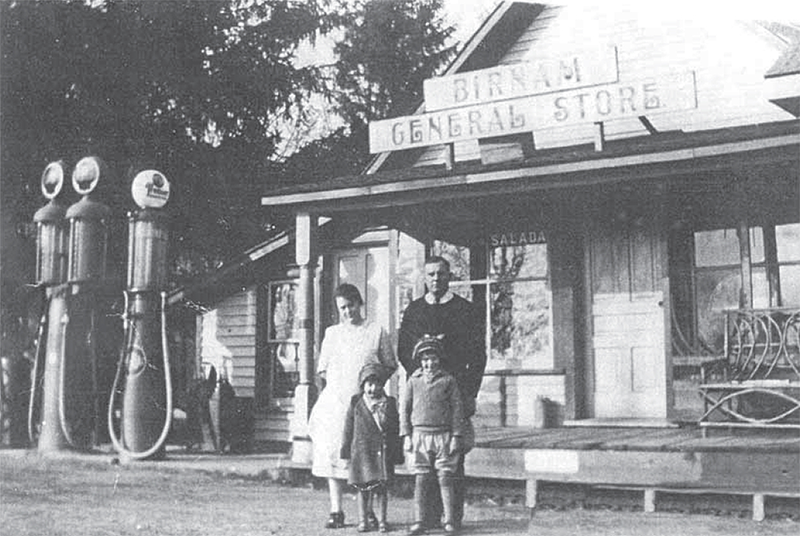
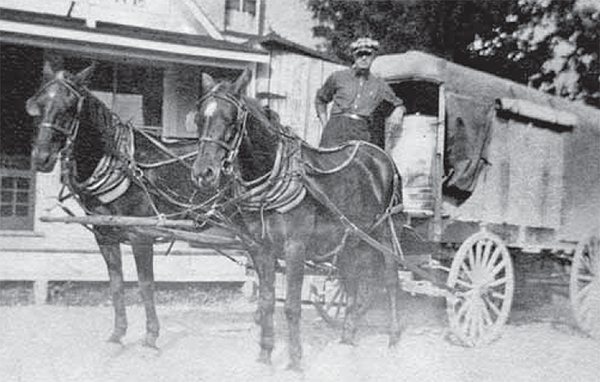

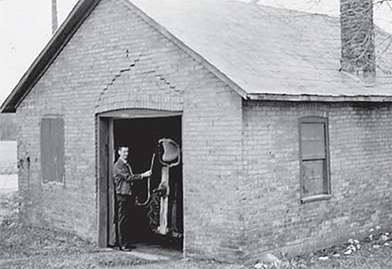

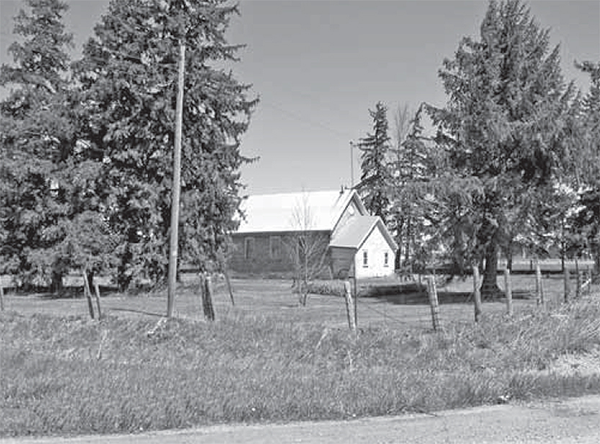
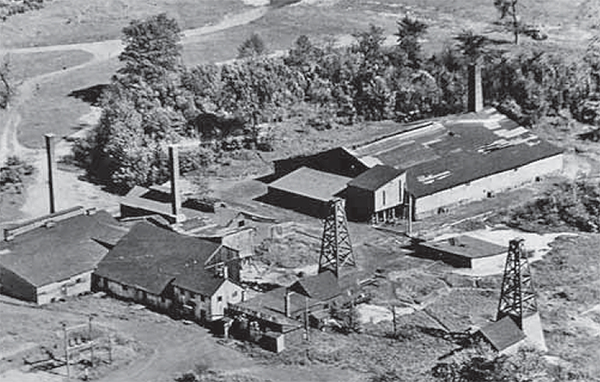
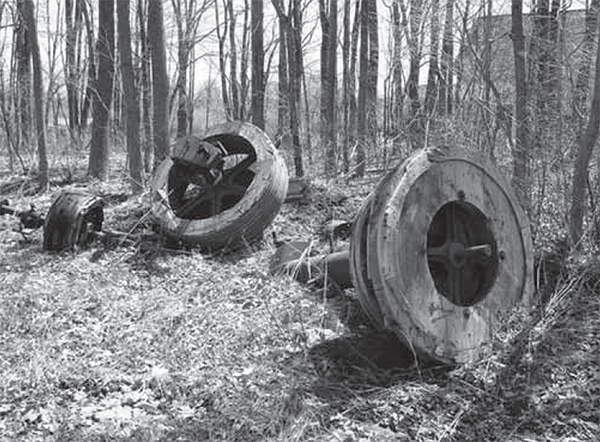
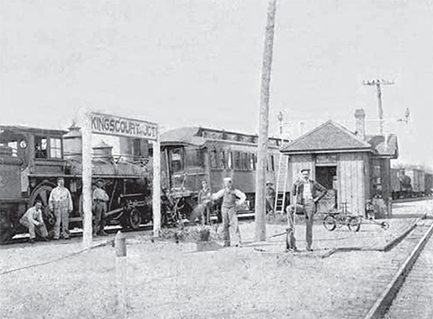
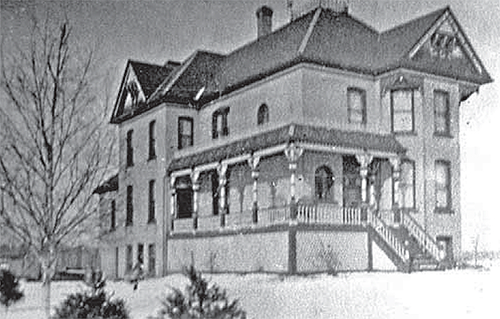
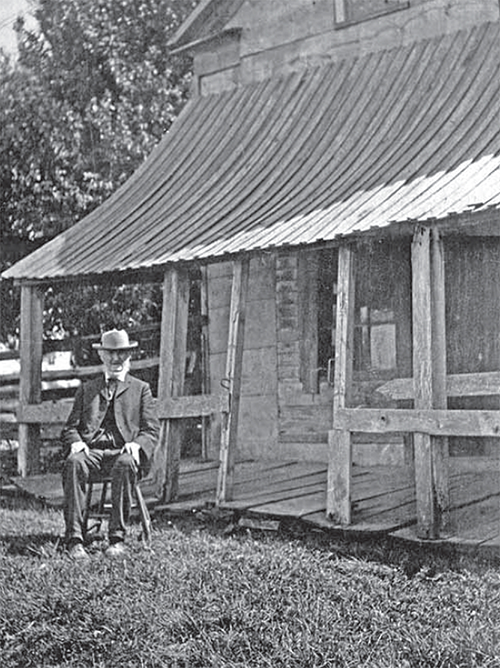
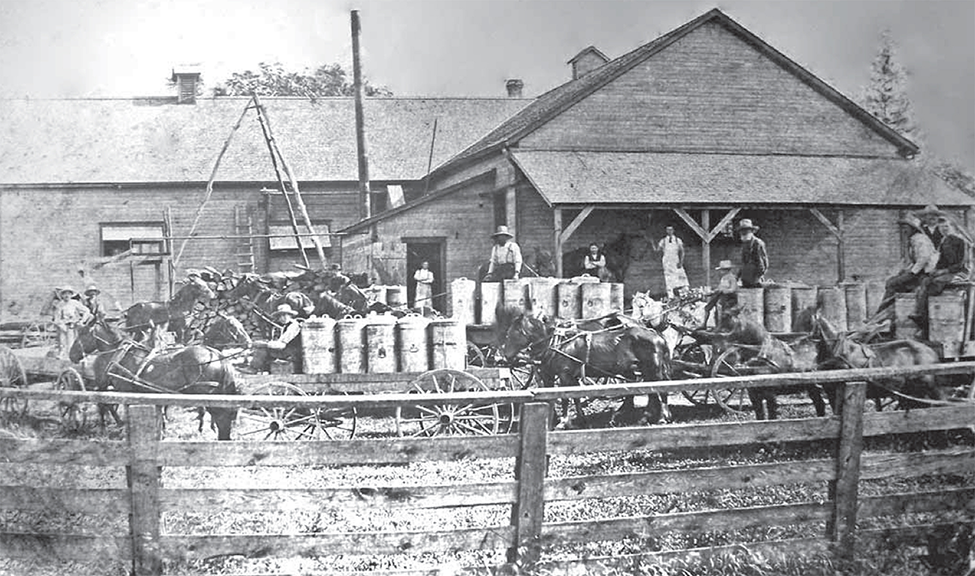
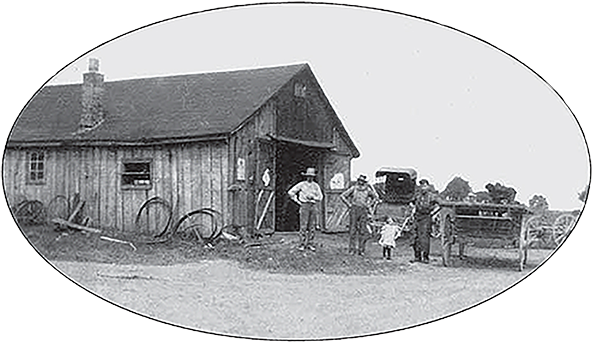
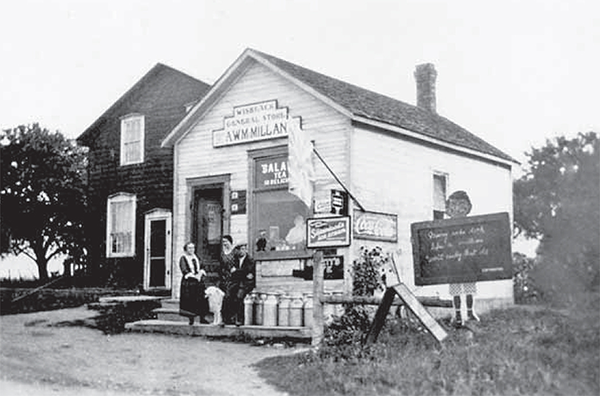

 Subscribe to this page
Subscribe to this page